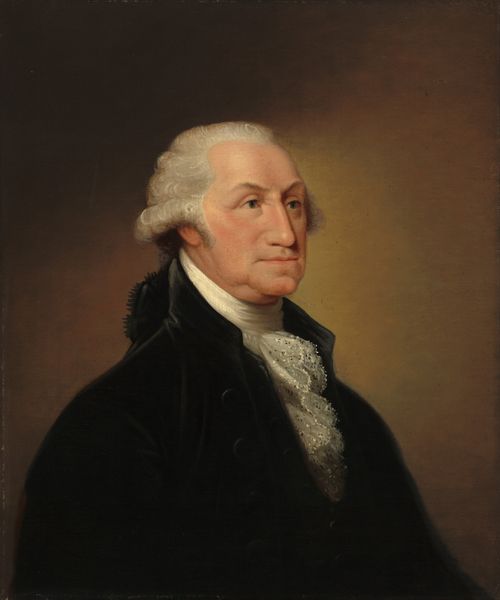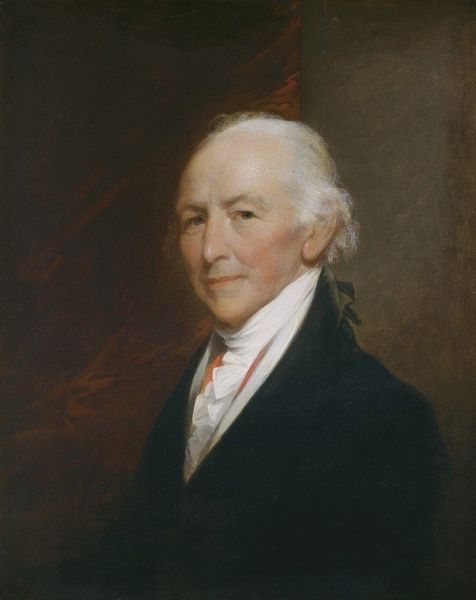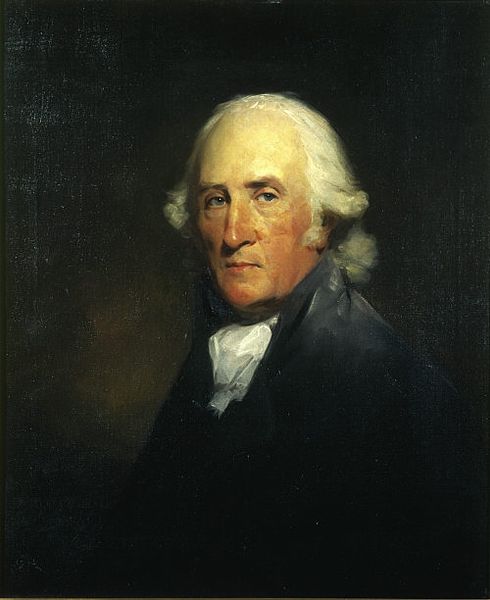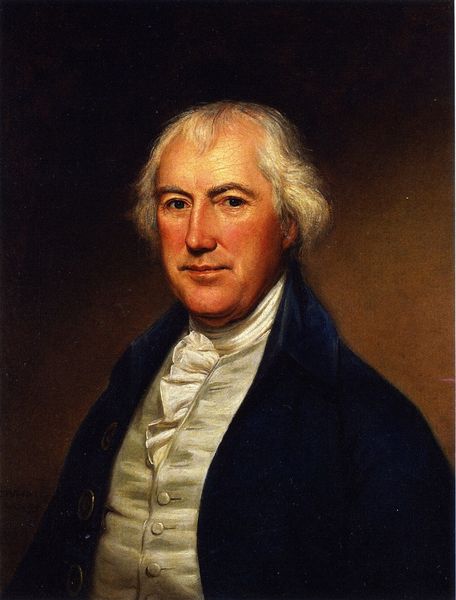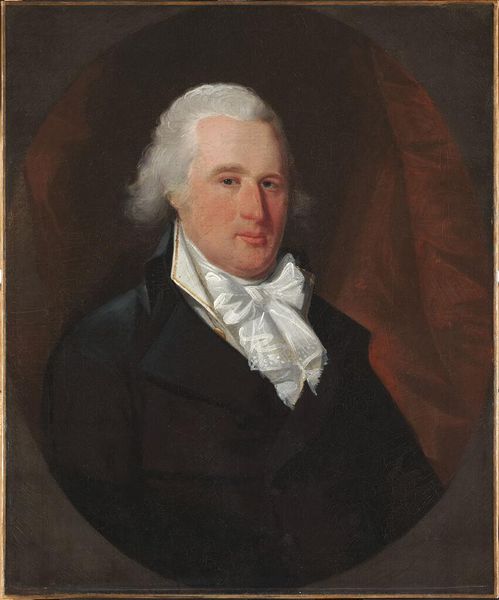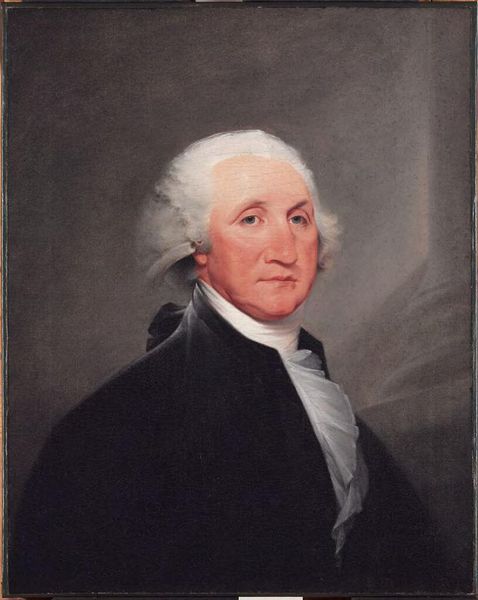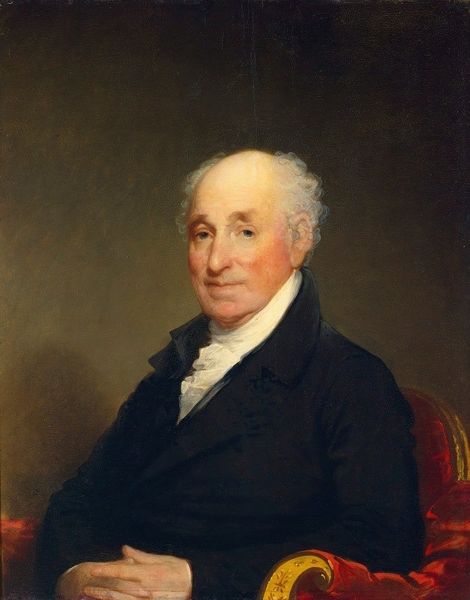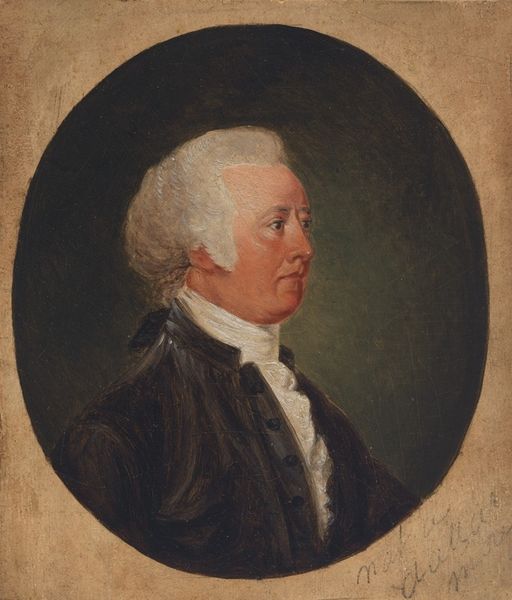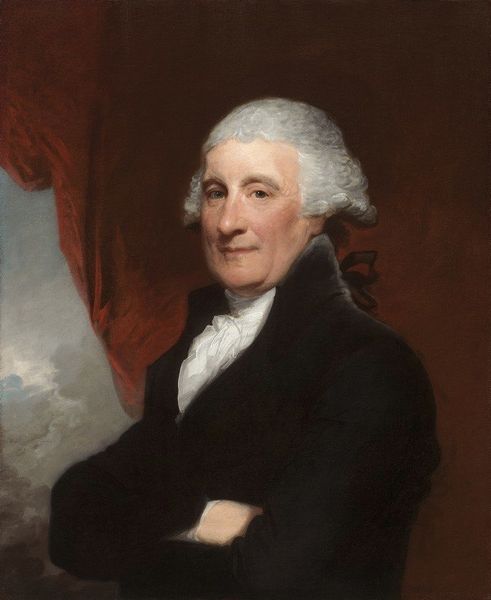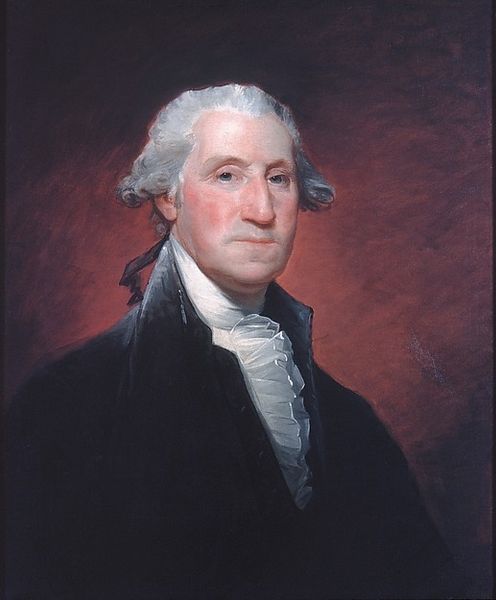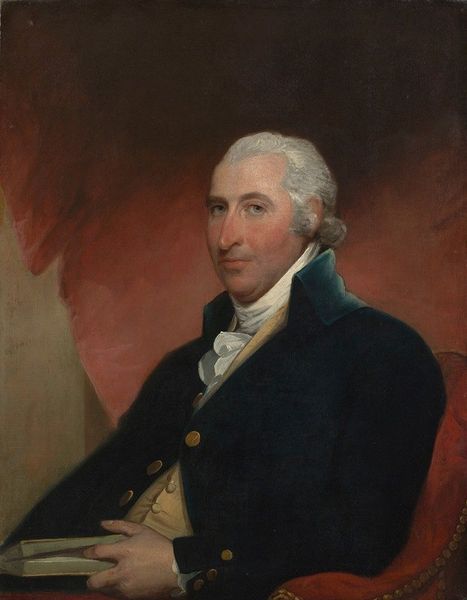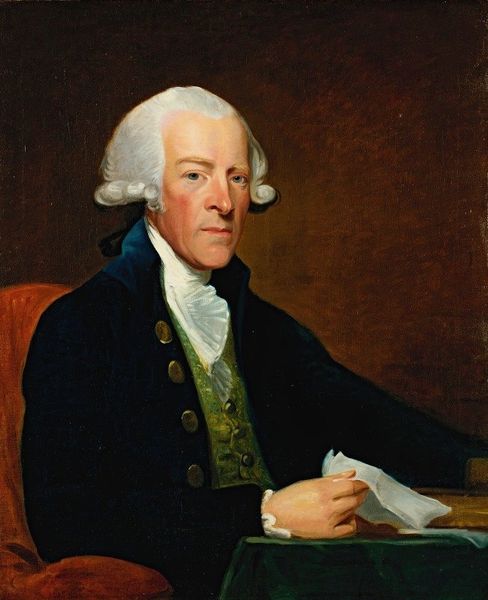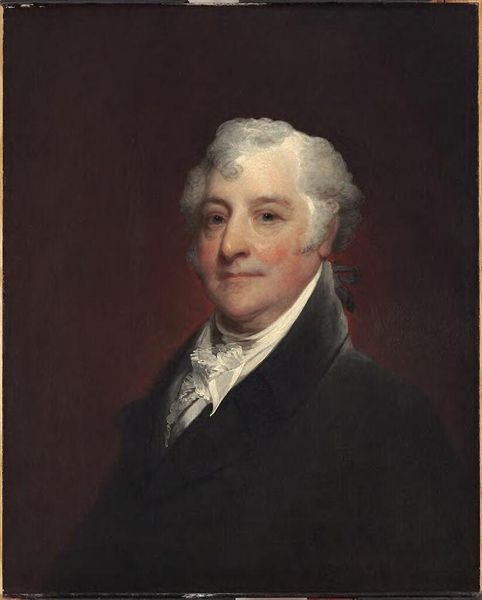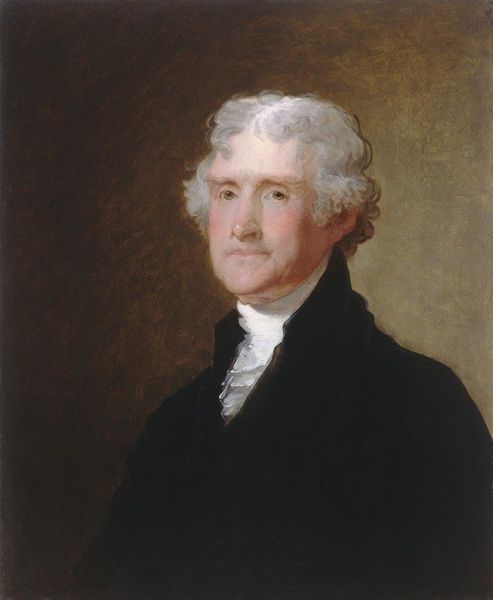
painting, oil-paint
#
portrait
#
figurative
#
painting
#
oil-paint
#
romanticism
#
academic-art
#
portrait art
Copyright: Public Domain: Artvee
Curator: Looking at Gilbert Stuart’s "Portrait of Ralph Winstanley Wood, Esq. of Pierrepont Place, Frensham," I’m struck by the subject’s expression, almost guarded. It’s an oil painting, isn't it? The dark palette and severe gaze suggest someone powerful and maybe a bit aloof. Editor: It is indeed oil on canvas, a typical choice for portraits of the time. Consider the context, though: such portraits functioned as signifiers of social standing and legacy. The formal attire, the slightly distant gaze—these elements project an image of a refined gentleman. Curator: Exactly, but it’s *how* that image is projected that I find fascinating. Notice how the painter renders the face with almost exaggerated smoothness, idealizing the subject perhaps, yet not completely masking the slight hint of weariness around the eyes. What does this suggest about gendered expectations and power dynamics in portraiture of the period? Editor: One could argue this serves the political agenda. These portrait commissions played a significant role in shaping the perceived authority and virtue of ruling elites in the socio-political spheres of the time, in perpetuating societal norms and, in many cases, maintaining unequal structures. It begs questions of representation and audience. How does the viewing public factor into its power? Curator: It's an interesting paradox then, isn't it? The softness suggests human vulnerability, a chink in the armor if you will. This contrasts sharply with the assumed air of importance suggested by the formal coat, carefully styled wig, and stern posture. Is he, the subject, complicit in performing a role? Editor: Certainly, he participates. These paintings existed within a market and patronage system, influencing who and how people were portrayed. Patron expectations played a vital role. Artists such as Stuart shaped perceptions and helped clients reinforce or revise personal branding. It’s an intricate dance of status and self-representation. Curator: Precisely! So we aren't merely looking at an image; we are engaging with a carefully constructed presentation of selfhood and society at a specific point in history. Editor: A point well taken. By interrogating portraits like this, we uncover narratives far deeper than just appearances.
Comments
No comments
Be the first to comment and join the conversation on the ultimate creative platform.
